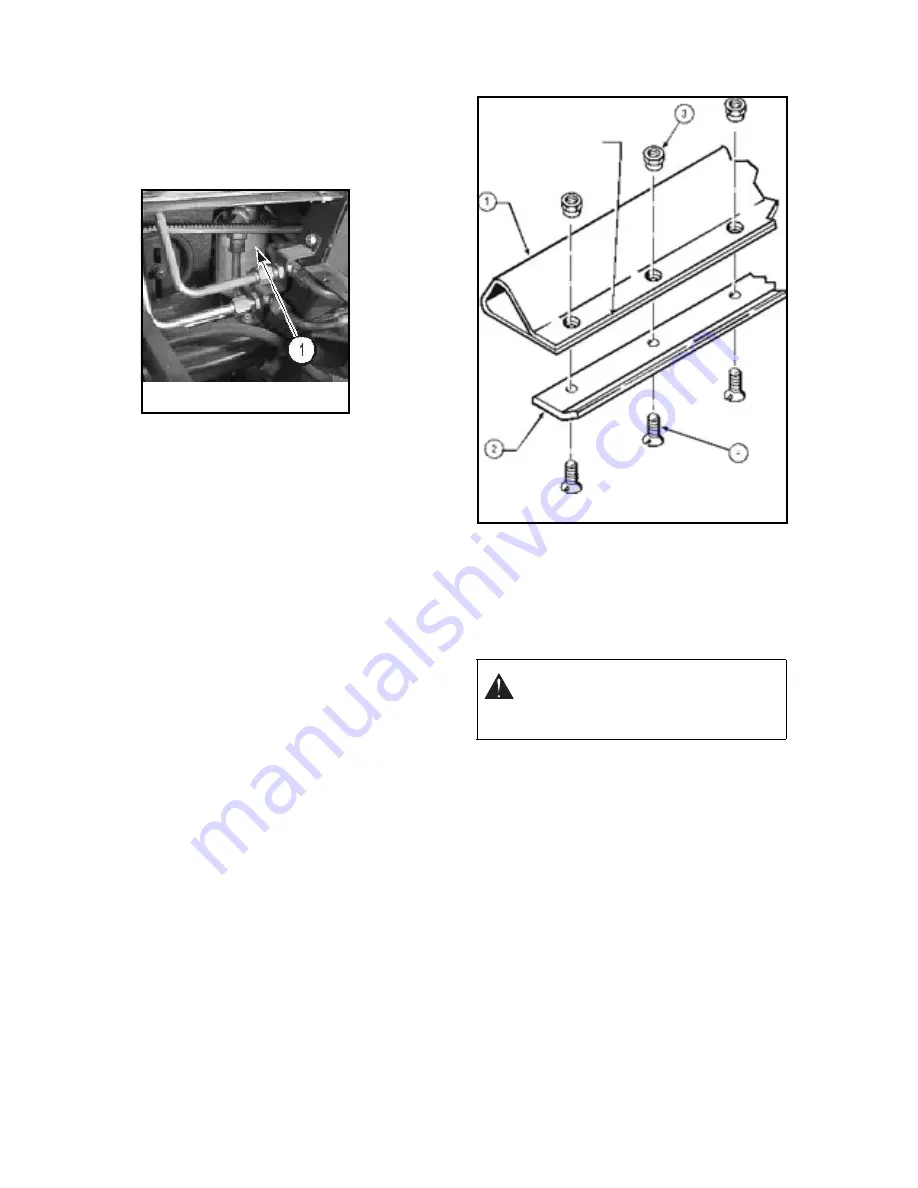
GB - 23
HYDRAULIC OIL FILTER
To prevent damage to the hydraulic system,
the hydraulic oil filter (1, Figure 21), located
under right fender, should be changed after
the first 25 hours of operation and every 250
hours thereafter.
1. Remove the old filter.
2. Install new filter, filling filter with oil
before re-installing. Apply oil to the
o-ring of the filter prior to installation.
Hand-tighten only.
3. Run engine at idle speed with
hydrostatic pump in neutral for five
minutes.
4. Check hydraulic oil level, and add oil if
necessary. Frequently check oil level in
the hydraulic tank. Should the pump run
short of oil, immediate and permanent
damage will result.
BEDKNIFE REPLACEMENT
When the bedknife becomes damaged or too
worn to keep sharp, it must be replaced.
Follow the procedure below.
1. The backbar (1, Figure 22), bedknife (2,
Figure 22), and fasteners have been
assembled at the factory under tension.
To ease replacement and prevent
misalignment of components, you may
wish to clamp the leading edge of the
backbar two or three places before
removing the old fasteners.
2. Remove shoulder nuts (3, Figure 22)
and flathead screws (4, Figure 22). If
shoulder nuts are badly rusted or
corroded, they may have to be cut off
and the screws driven out.
3. Clean the bottom surface of the backbar
for maximum metal contact with the new
bed bar.
4. Fasten the new bed knife to the bottom
of the backbar in the position shown
(bent edge up). Shoulder of shoulder
nuts must be seated firmly in the
backbar and screws must be flush with
the bottom of the bed knife.
5. Torque shoulder nuts 35 to 40 lbf/ft
(47.4 to 54.2 N•m).
LUBRICATION
Figure 23 shows the top view of the 8400 with
guards removed. Lubricate your tractor at the
recommended locations and intervals using
proper lubricants so that maximum service
and long life of the machine may be obtained.
Figure 21
CAUTION: Before doing any work
on your machine, stop the engine,
remove the ignition key, and set
parking brake.
Figure 22
Clamp this edge










































